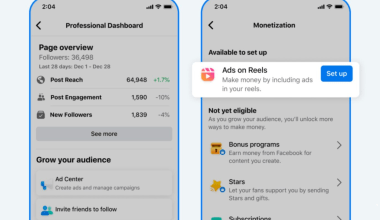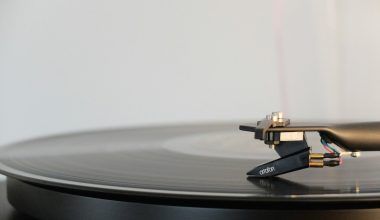In the music industry, an electronic press kit (EPK) is like your digital business card. But it’s way more than just a card—it’s your professional resume, portfolio, and promotional toolkit all wrapped up in one neat package. If you’re a musician trying to stand out in today’s competitive landscape, having a stellar EPK is no longer optional. It’s your chance to showcase your music, brand, and story to potential collaborators, venues, labels, and media outlets.
Think of it this way: while your social media and website tell your story to fans, your EPK speaks directly to industry professionals. It’s designed to make their job easier by giving them quick access to all the information they need about you.
The Benefits of Having an EPK
Still on the fence about creating an electronic press kit for musicians? Here are some compelling reasons why you need one:
- Professionalism: An EPK shows you’re serious about your music career. It’s polished and organized—a far cry from sending scattered links or unformatted files.
- Convenience: All your essential materials (bio, photos, music, and videos) are in one place, saving everyone time.
- Opportunities: Many venues, festivals, and media outlets specifically request an EPK. Without one, you’re likely missing out on opportunities.
- Brand Control: You control the narrative. Your EPK is a chance to tell your story the way you want it to be told, emphasizing your unique style and accomplishments.
What Should Be Included in Your EPK?
Now that you’re convinced you need an electronic press kit, let’s break down what should go inside:
1. Your Biography
Your bio is the heart of your EPK. It should tell your story in a way that’s engaging, concise, and tailored to your audience. Include details like:
- Where you’re from.
- What kind of music you create.
- Your key influences.
- Highlights of your career so far, such as awards, major performances, or notable collaborations.
Pro Tip: Write multiple versions of your bio—a short one for quick overviews and a longer one for in-depth features.
2. High-Quality Photos
Visuals are crucial. Include professional, high-resolution photos that represent your brand. Think album covers, live performance shots, or creative portraits. These images will be used for promotional purposes, so make sure they’re top-notch.
3. Music Samples
Your EPK should feature your best tracks. Use streaming links (Spotify, SoundCloud) or downloadable files for easy access. If you’re pitching to media outlets, make sure the music is properly tagged with your name, track title, and contact info.
4. Videos
Videos add a dynamic touch to your EPK. Include:
- Live performance footage.
- Official music videos.
- Behind-the-scenes clips.
This gives industry professionals a glimpse into your performance style and personality.
5. Press Coverage
Have you been featured in blogs, magazines, or interviews? Add snippets and links to these features. It’s a great way to build credibility and show that others are talking about your music.
6. Contact Information
Make it easy for people to reach you. Include:
- Email address.
- Phone number.
- Social media links.
If you have a manager or booking agent, add their details too.
7. Social Proof
Include stats like your streaming numbers, social media followers, or notable milestones. These details prove that you have an engaged audience.
How to Create an EPK
Creating an electronic press kit for musicians doesn’t have to be daunting. Here’s a step-by-step guide to help you get started:
Step 1: Choose a Platform
You can host your EPK on your website, a dedicated EPK platform, or even as a PDF. Just ensure it’s easy to navigate and mobile-friendly.
Step 2: Organize Your Content
Gather all the elements mentioned above and organize them into sections. Make sure everything is up-to-date and reflects your current brand.
Step 3: Design for Impact
Your EPK should be visually appealing and consistent with your branding. Use clean layouts, bold headings, and cohesive colors.
Step 4: Test and Share
Before sending out your EPK, test it to ensure all links work and files are accessible. Then, share it with industry professionals through email or as a downloadable link.
Common Mistakes to Avoid
When creating your EPK, steer clear of these pitfalls:
- Too Much Information: Keep it concise. Overloading your EPK with unnecessary details can overwhelm the recipient.
- Poor Quality Assets: Use only high-resolution images and properly mixed/mastered tracks.
- Outdated Content: Regularly update your EPK to reflect your latest achievements.
- No Clear Call-to-Action: Make it clear what you want the recipient to do—book you, write about you, or listen to your music.
Promoting Your EPK
Once your EPK is ready, it’s time to put it to work. Here’s how:
- Email Outreach: Send your EPK to venues, media outlets, and other industry contacts. Personalize your emails for better results.
- Website Integration: Embed your EPK on your website, making it easy for visitors to access.
- Social Media: Share your EPK link on your social media profiles. It’s a great way to connect with industry pros who follow you.
Wrapping It Up
An electronic press kit for musicians is a powerful tool to elevate your music career. By presenting your music, story, and achievements in a professional and organized way, you’re opening doors to new opportunities. Whether you’re pitching to venues, labels, or media outlets, a well-crafted EPK can make all the difference.
Related Articles:
For further reading, explore these related articles:
- Understanding Explicit Record Labels: A Beginner’s Guide
- AI Master Music: The Future of Music Creation
For additional resources on music marketing and distribution, visit DMT Records Private Limited.






